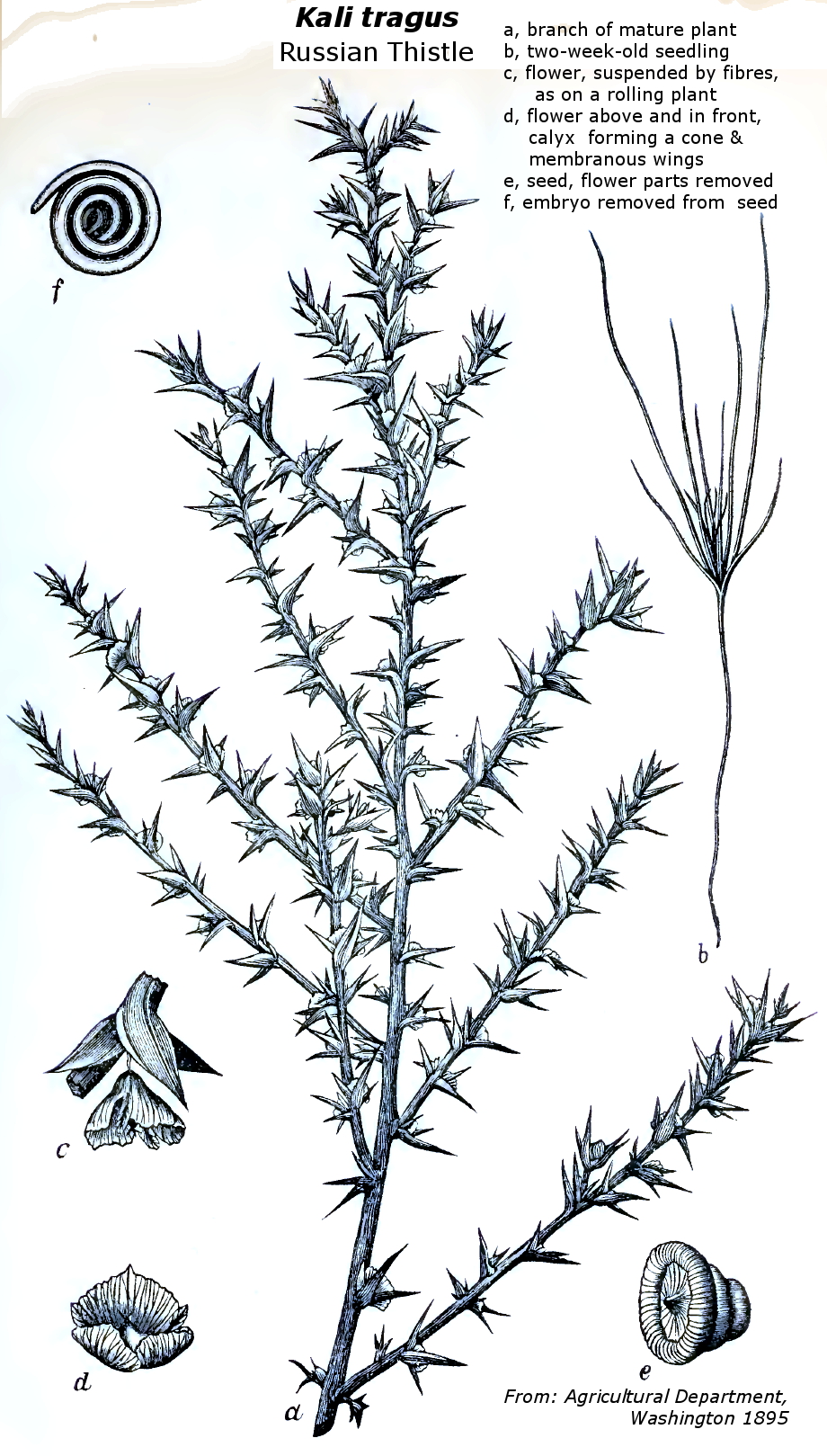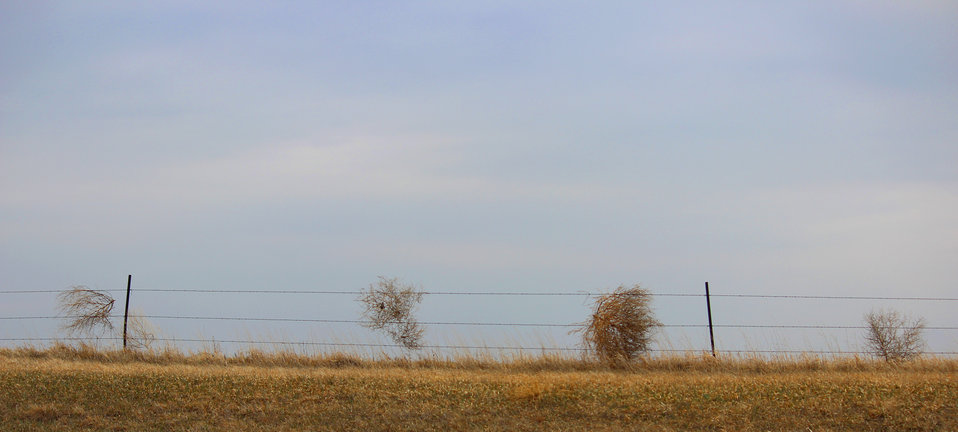Weed Management Lessons from a Warm and Dry Summer
by Fabian Menalled, Extension Cropland Weed Specialist

Illustration of the growth stages of Russian thistle. Full sized image (777KB).
This summer we experienced very warm and dry growing conditions, and the heat and lack of rain severely damaged many crops. Many winter wheat growers were forced to cut their crop for hay because of low yield and quality. Thousands of spring wheat, pea and lentil acres were severely injured by the intense heat and lack of moisture. Conditions were such that in late June, Montana Governor Steve Bullock issued an executive order declaring a drought emergency in 19 northcentral and eastern counties and two American Indian reservations (Executive order at FMCSA; scroll to “Montana” and select “Executive Order 5-2017”).
Crops were severely damaged by the lack of rain, while farmers were confronted by increased weed management challenges. Low soil moisture resulted in many cases of increased weed competition and reduced control efficacy. Te lack of control could cause problems in future years through the weed seeds that were produced.
Problematic weed species such as Russian thistle, common mallow, and kochia are drought tolerant, and their management became more difficult under low moisture conditions. Species with extensive and deep root systems, such as Canada thistle, were able to “mine” water from deep soil horizons. Winter annual species such as cheatgrass benefited from last year’s autumn rainfalls, which gave them a competitive advantage this summer.
Delayed weed emergence decreased the efficacy of early season management tactics sporadically across Montana. Also, late season herbicide applications were impacted by the dry and hot conditions. Selecting a proper herbicide application in warmer and drier environments is complicated as weeds usually produce thicker leaf cuticles, resulting in less herbicide absorption into the plant. Also, slow plant growth results in less translocation of the herbicide.
Soil applied herbicides are usually less effective in dry conditions as moisture is required for herbicide activation and uptake. This is especially true for pre-emergent herbicides which require rainfall or irrigation to move into the soil depth where weed seed germination occurs. Tese herbicides usually need rain or irrigation within two to three weeks of application to be effective, but in many cases optimal performance occurs when moisture is received within a day or two of application. Herbicides that remain on a dry soil surface may be blown away with soil particles, increasing the risk of herbicide injury if sensitive crops are planted close by. Finally, the slow herbicide degradation that occurs in dry conditions may result in future crop damage. To avoid this risk, farmers should keep good records and carefully read the label before planting sensitive crops such as peas and lentils.

Tumbleweeds (Kochia scoparia) caught in a fenceline. Photo: Krista Lundgren, U.S. Fish and Wildlife Service. Full sized image (2.1MB).
Postemergence herbicides may represent a management option in dry conditions, but their performance is also challenged by hot temperatures and lack of moisture. As with soil applied herbicides, a post-emergence application needs to be absorbed and translocated to be effective. Under drought conditions, stressed plants tend to get dustier in dry weather conditions, reducing herbicide contact. Other weeds species, including common lambsquarters, develop thicker cuticles when stressed which may result in reduced herbicide absorption and uptake. Furthermore, drought-stressed plants slow their growth and do not efficiently move the herbicide within them. Finally, in many cases postemergence treatments cannot always be applied at the proper time due to uneven crop stands and multiple weed fushes that occur with dry conditions.
The efficacy of postemergence herbicide applications can be enhanced through proper selection of spray additives that improve herbicide coverage and absorption. Farmers should consult the herbicide label to see if the use of spray additives is allowed. For example, surfactants can enhance herbicide uptake by lowering evaporation of herbicide droplets, causing greater herbicide droplet contact with the leaf surface, and aiding in herbicide movement into stomata, but care should be taken as improper applications could synergistically enhance the detrimental impact of dry conditions.
Eventually it will start raining again. Hopefully, this fall, next spring and the following summer will bring much-needed moisture. Still, it will be wise to remember lessons learned this summer.
Further Information
See the Weed Management section of the MSU Extension Cropweed Management resources page, or contact a cropweed specialist.
Originally published in the Fall 2017 issue of the Montana IPM Bulletin.
